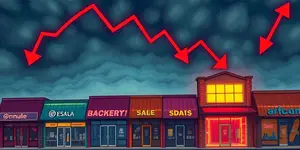
In recent years, exchange-traded funds (ETFs) have surged past mutual funds in daily trading volumes, signaling a profound shift in how investors engage with markets. This transition is not merely a statistical footnote—it represents a fundamental change in liquidity preferences, cost structures, and investor behavior worldwide.
By examining the dynamics behind this evolution and the forces at play, we can better understand why ETFs now dominate trading volumes and how this trend may shape the future of investment management.
The most striking difference between ETFs and mutual funds lies in their trading mechanisms. ETFs function like stocks, trading on exchanges throughout the day, while mutual funds transact only once daily at their net asset value (NAV).
This feature gives ETFs a critical edge: intraday liquidity and ease of trading, enabling investors to respond instantly to market movements. In contrast, mutual fund investors must wait until the end of the trading day, creating a lag between decision and execution.
These structural advantages underpin the rapid rise of ETFs, which now generate daily volumes far exceeding those of mutual funds.
Over the past decade in the United States, investor preferences have shifted dramatically. Long-term mutual funds experienced outflows of $2.9 trillion, while ETFs attracted inflows totaling $4.5 trillion. During the same period, active mutual funds saw net outflows of $4.0 trillion.
Emerging within this landscape is the growth of active ETFs, which accounted for approximately 26% of total ETF net inflows in 2024—up from just 1% ten years earlier. This uptake reflects investors’ desire for both professional management and the trading flexibility ETFs provide.
Globally, ETFs now represent 15.5% of the mutual fund market, up from 9.5% just two years ago. In Taiwan, a vivid example, ETF market share of investment trust funds skyrocketed from 47% to 65% over the same period, underscoring how quickly this instrument can overtake traditional vehicles in receptive markets.
Key benefits of ETFs extend beyond trading flexibility. Four pillars support their accelerated adoption:
Cost-sensitive retail investors and large institutions alike have recognized these advantages, funneling capital into ETFs at a pace unseen in the mutual fund world.
Recent data highlights the scale of this shift in the U.S. as of May 2025:
Across all active and indexed funds, combined assets stood at $32.68 trillion, with indexed products growing slightly faster (5.2% year-over-year) than active (3.8%). Despite mutual funds still holding over $25 trillion compared to ETFs’ $8 trillion, the momentum unmistakably favors ETFs.
Defined contribution (DC) retirement plans in the U.S. still hold over $5 trillion in mutual funds, indicating vast untapped potential for ETF adoption. As regulators and plan sponsors recognize the advantages of lower-cost, transparent investment options, inclusion of ETFs in retirement lineups is accelerating.
In markets like Taiwan, regulatory approval for a growing range of active ETFs has spurred retailer and institutional interest, further diminishing mutual funds’ traditional stronghold.
Despite their appeal, ETFs are not without drawbacks. Less liquid ETFs can experience wider bid-ask spreads and market impact deviations from NAV, potentially incurring hidden costs. Tracking error, driven by replication methods and underlying asset liquidity, can also erode returns relative to benchmark indices.
Mutual funds, on the other hand, retain certain advantages: professional managers can tactically navigate market cycles, and some investors value the simplicity of end-of-day trading and pooled investments without worrying about intraday price swings.
Looking ahead, the ETF-versus-mutual-fund debate will hinge on innovation and regulation. As product variety expands—incorporating active strategies, thematic exposures, and ESG integration—ETFs are likely to capture even more market share. Simultaneously, mutual funds may differentiate through unique active strategies and advisory integrations within retirement platforms.
Ultimately, investors benefit most from a market fostering choice, transparency, and competition. Whether layered across portfolios for liquidity, cost savings, or specialized exposures, ETFs have indisputably reshaped the investment landscape, overtaking mutual funds in trading volumes and setting a new standard for fund management.
As the financial ecosystem continues to evolve, staying informed about these structural shifts remains critical. Embracing the strengths of both ETFs and mutual funds can help investors navigate market complexity and pursue long-term goals with confidence.
References













